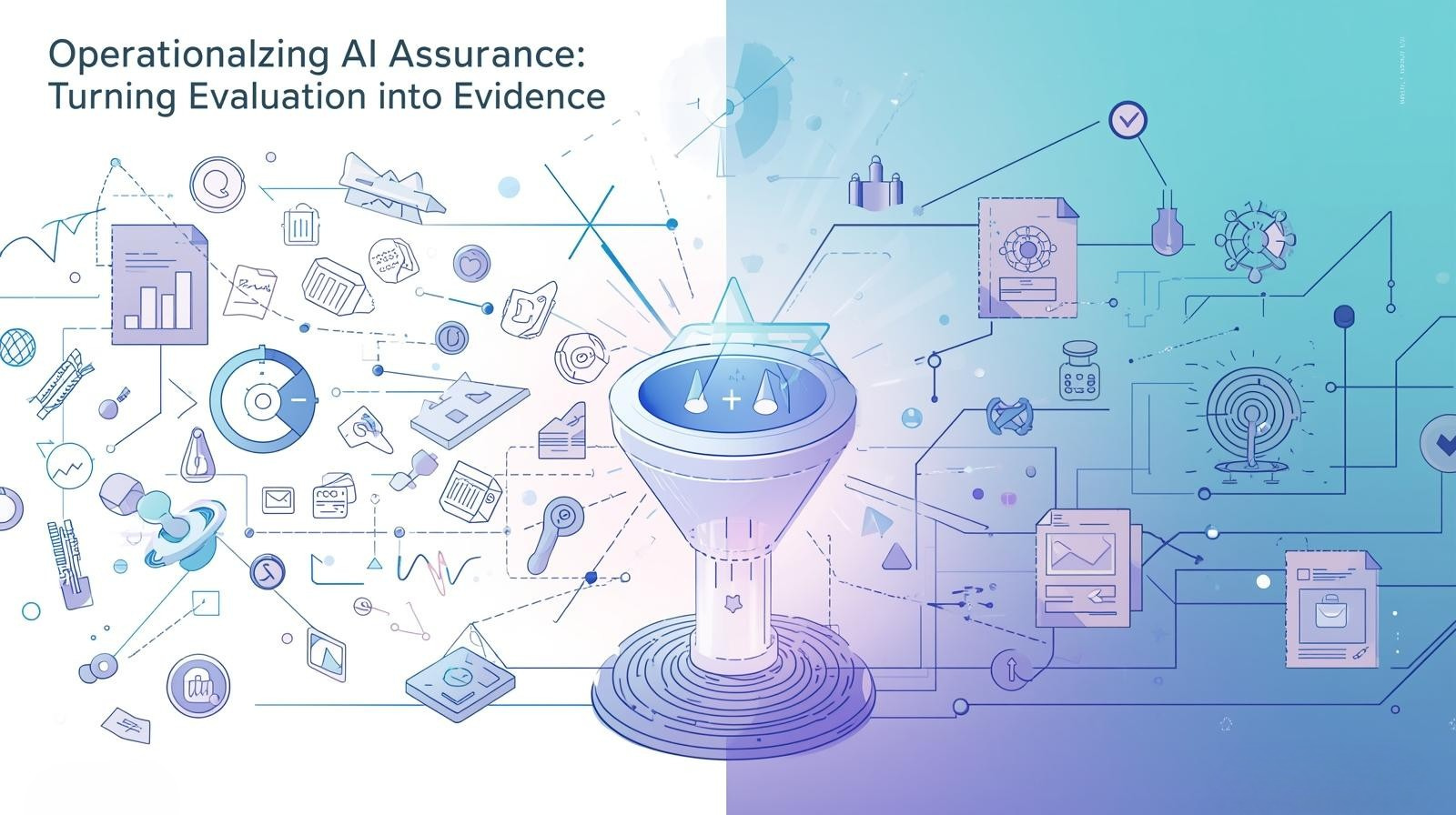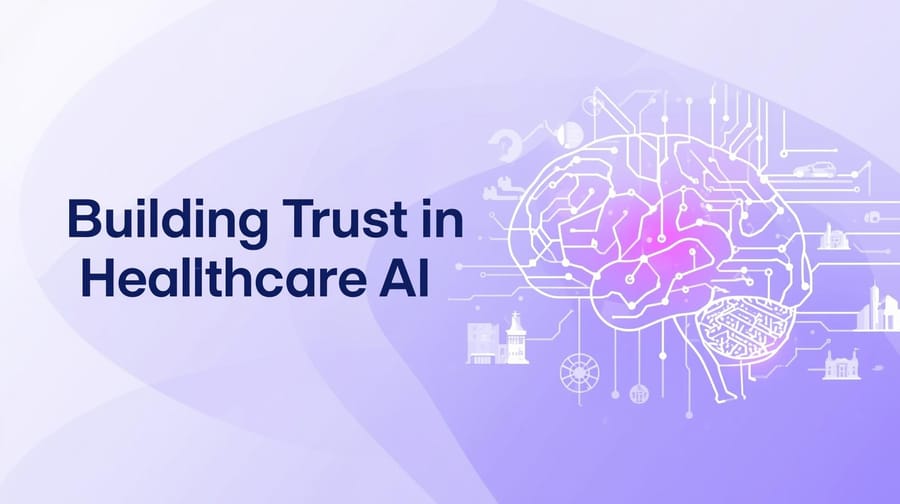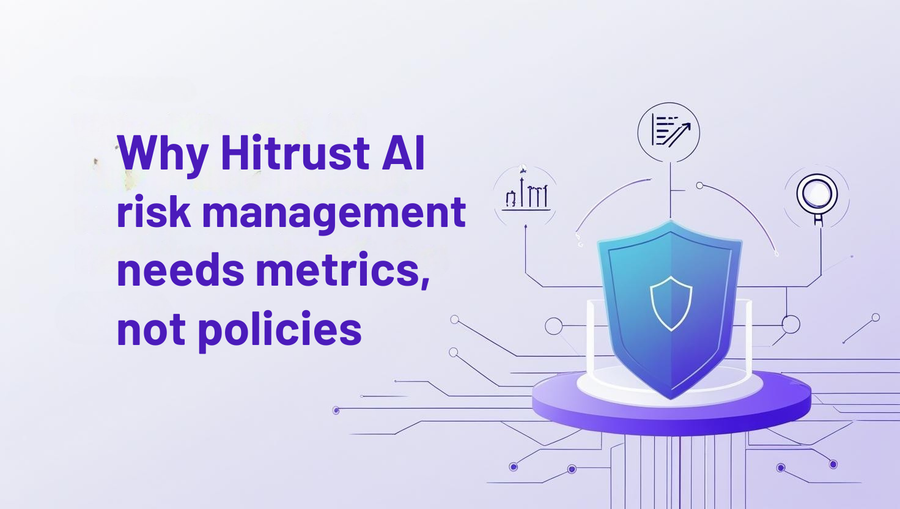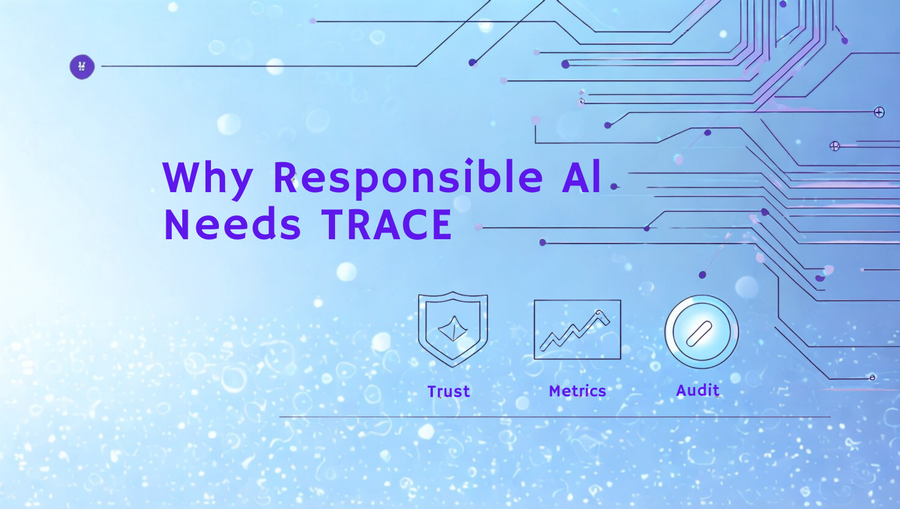Sixty-one percent of Fortune 500 data leaders reported pausing at least one AI project because “the numbers looked good, but the evidence didn’t.” Accuracy, fairness, and privacy dashboards might reassure engineers—but they fall flat in front of auditors, regulators, or customers.
The challenge is clear: metrics aren’t compliance. Assurance demands context, traceability, and proof.
Why AI Assurance Can’t Be an Afterthought
AI now powers decisions in healthcare, finance, insurance, and human resources. Yet assurance processes remain fragmented. Organizations juggle disconnected evaluations, scattered policy documents, and annual audits that can’t keep pace with continuous deployments.
This leads to three recurring gaps:
- No clause-aligned audit trail: Metrics exist but aren’t mapped to statutory requirements like EU AI Act Articles 9–15.
- No deterministic link between metrics and controls: Teams identify risks like bias but can’t prove how they were mitigated.
- No real-time assurance: Evidence remains static, forcing regulators and buyers to accept promises instead of proof.
With frameworks such as the EU AI Act, NIST AI RMF, and ISO/IEC 42001 moving from recommendations to enforceable standards, intent alone isn’t enough. Organizations must show verifiable execution.
Practical Challenges in Turning Metrics into Evidence
1. Contextual ambiguity
A model with 92% accuracy may be acceptable for a retail chatbot but unacceptable for clinical decision support. Without contextual thresholds, risk classifications vary wildly across teams and industries.
2. Evaluation sprawl
Organizations often run dozens of tools—Fairlearn, AIF360, Evidently, DeepEval, Giskard, red-team libraries. Outputs end up scattered across notebooks, slides, and SharePoint folders. When auditors arrive, what they see is a patchwork, not a ledger.
3. Semantic drift
Different teams use different terminology. One group reports “toxicity rate,” another “negative sentiment.” Without canonical identifiers, evidence loses precision and fails audit scrutiny.
4. Manual control mapping
Linking evaluation outputs to regulatory clauses is usually manual, inconsistent, and error-prone. The result is interpretation gaps between engineering and compliance teams.
5. Fragile audit trails
Screenshots and logs are easily altered or lost. Regulators increasingly demand tamper-proof lineage and immutable records—requirements that few pipelines meet today.
Governance-as-Code: A CI/CD Flow for Assurance
Instead of treating governance as an afterthought, assurance can be embedded directly into the development pipeline. The Governance-as-Code CI/CD flow breaks it into five steps:
- Build GenAI Application/Agent
- Develop RAG systems, LLM apps, or predictive agents.
- At this stage, most teams overlook governance, assuming it can be handled later.
- Run Evals
- Use tools like Deepeval, Ragas, Evidently to test correctness, fairness, safety, and drift.
- These generate valuable signals, but without structure they remain siloed metrics.
- Run Assurance Engine
- Capture outputs, map them deterministically to controls, and generate clause-linked governance evidence.
- This transforms metrics into structured, regulatory-grade proof.
- Review Risk, Compliance Gaps & Action List
- Visibility shifts from raw numbers to actionable insight: bias detected, safety violations flagged, missing clauses identified.
- Teams receive remediation tasks with ownership and deadlines.
- Remediate & Deploy with Evidence
- Issues are fixed in dev/test.
- Deployment is gated with an evidence package mapped to NIST AI RMF, EU AI Act, ISO 42001, and voluntary AI safety standards.
- Each release carries an embedded audit trail, eliminating governance blind spots.
This workflow turns assurance into a closed loop—continuous, automated, and auditable.
Real-World Example: Imaging Center Audit
An imaging center deployed a cancer-detection model with 0.92 AUC. Technically strong—but flagged as high-risk under EU medical-device law.
- Action taken: Engineers ran fairness and robustness checks, wrapping results with purpose (assist radiologists), risk tier (high), and downstream impact (patients, clinicians).
- How it worked: The system generated a sealed evidence dossier, linking metrics directly to EU AI Act Article 15 (robustness and accuracy).
- Outcome: External auditors approved without extra data pulls. Deployment reached 70 clinics ahead of schedule, and quarterly audits were reduced by 55%.
The difference wasn’t higher accuracy—it was defensible evidence.
Emerging Trends Driving Assurance Forward
- Continuous audits: Regulators and enterprise buyers are moving from annual reviews to continuous assurance dashboards.
- Cryptographic lineage: Hash chains and tamper-evident logs are fast becoming industry standards for evidence trails.
- Clause-first design: Every metric must tie back to a legal clause, not just an internal threshold.
- Risk-weighted orchestration: Preventive, detective, and corrective controls are triggered dynamically based on residual risk severity.
- Responsible AI indices: Composite scores (fairness, robustness, privacy) provide board-ready assurance snapshots.
Together, these trends make assurance as natural in AI as DevSecOps became in cybersecurity.
Key Takeaways
- Metrics aren’t compliance. Evidence requires context, clause alignment, and immutability.
- Practical gaps include evaluation sprawl, semantic drift, and fragile audit trails.
- Governance-as-Code embeds assurance into pipelines, converting evals into audit-ready evidence.
- Frameworks are converging: EU AI Act, NIST AI RMF, and ISO 42001 all demand real-time, verifiable proof.
- Assurance pays dividends: faster audits, accelerated procurement, reduced rework, and stronger trust with regulators and customers.
The next wave of AI regulation won’t accept intent documents or isolated dashboards. Organizations that thrive will be those who can prove trust with evidence—automatically, as part of development.
What’s your biggest challenge in turning metrics into assurance?
Share your thoughts in the comments, and let’s build a playbook for operational AI assurance that regulators, customers, and engineers can all trust.






